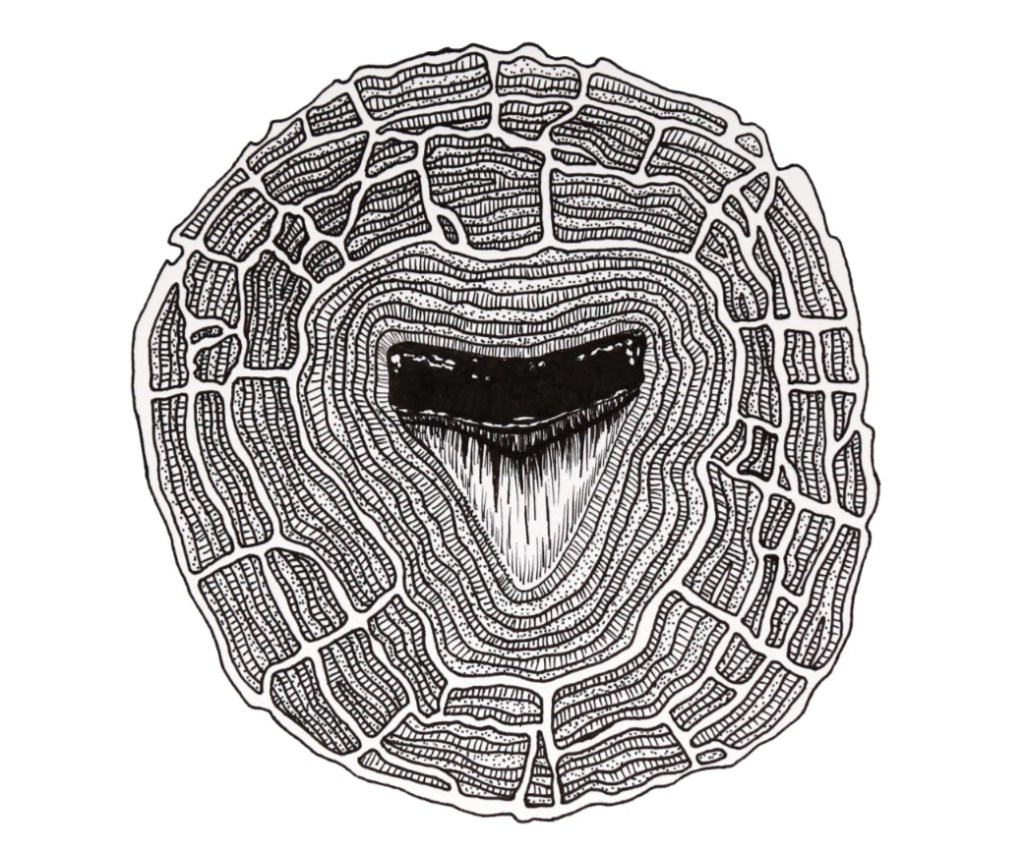BY JULIA BARNES

Image by Sebastian Pena Lambarri
Exploitation of the deep sea may begin in less than two years. Here’s why it should be stopped.
- Polymetallic nodules are key to the deep sea community.
If removed, polymetallic nodules would not recover on anything but a geological timescale. They grow incredibly slowly — at a rate of 10mm per million years.

Drawing of a cross section of a polymetallic nodule by Julia Barnes
Polymetallic nodules are rock-like formations that exist on the seafloor. Companies are interested in mining them because they contain metals like nickel, copper, and cobalt.
These nodules are often the only hard substrate in the muddy, silty environment of the abyssal plains.
Polymetallic nodules are critical habitat for corals and sponges along with many other species.
Communities of microbes live on and inside polymetallic nodules in greater density and diversity than in the surrounding sediment. These microbes help sequester carbon.
Studies suggest that polymetallic nodules may regulate the conditions of the surrounding water — moderating the chemical balance, nutrient contents, and pH — conditions that affect the ocean’s livability for all other creatures.
2. The deep sea is the largest active carbon sink on earth.
Why would we allow something essential to the functioning of the ocean to be disrupted?
Deep sea mining risks damaging the largest active carbon sink on the planet. If mining goes ahead, the removal of nodules and the release of sediment could permanently reduce the ability of the deep sea to sequester carbon.
Mining the seafloor would create plumes of sediment — both at depth, and in the midwater zone where mining waste would likely be discharged. This sediment would contain carbon which would exacerbate ocean acidification.
3. Ecosystems won’t recover.
Species in the deep sea are slow-growing and long-lived. Corals can be 4,000 years old. Sponges can be 11,000 years old.
A study called DISCOL looked at the effects 26 years after simulated deep sea mining. The affected area has not recovered. Much of the biodiversity is still missing.
Species extinction is a likely outcome of deep sea mining.
4. Sediment plumes kill wildlife.

Photo by Julia Barnes
Scientists estimate each mining vessel would release 2–6 million cubic feet of sediment into the marine environment every day. That’s equivalent to up to 22,000 dump trucks full of sediment being dumped into the ocean per day per mining vessel — and there are multiple mines planned.
Many animals would be smothered by the plumes. Currents would carry the sediment hundreds of kilometers out from mining sites. When fine sediment gets into the gills of fish, it damages their ability to breathe and can kill them.
Numerous species of migratory fish, sharks, and plankton would be affected.
5. The ocean is not ours to exploit.
The UN convention on the law of the sea defines the deep seabed as the “common heritage of mankind.” When people speak about this, they often change the wording to call it the common heritage of humankind. But they are still wrong. The deep sea does not belong to us. It was here long before we were and will be here long after. If anything, we belong to the ocean.
It would be madness to allow the deep sea to be ruined for the short-term profit of a few corporations, while the future of life on earth may depend on keeping it intact.
Take Action
Sign the Pacific Blue Line Statement calling for a ban on deep sea mining: https://www.pacificblueline.org/pacific-blue-line-statement
Follow Deep Sea Defenders:
www.facebook.com/DeepSeaDefenders/
Get in touch if you want to be involved: deepseadefenders@protonmail.com
Julia Barnes is an environmentalist and award-winning filmmaker. She is the director of Sea of Life and Bright Green Lies.

Leave a comment